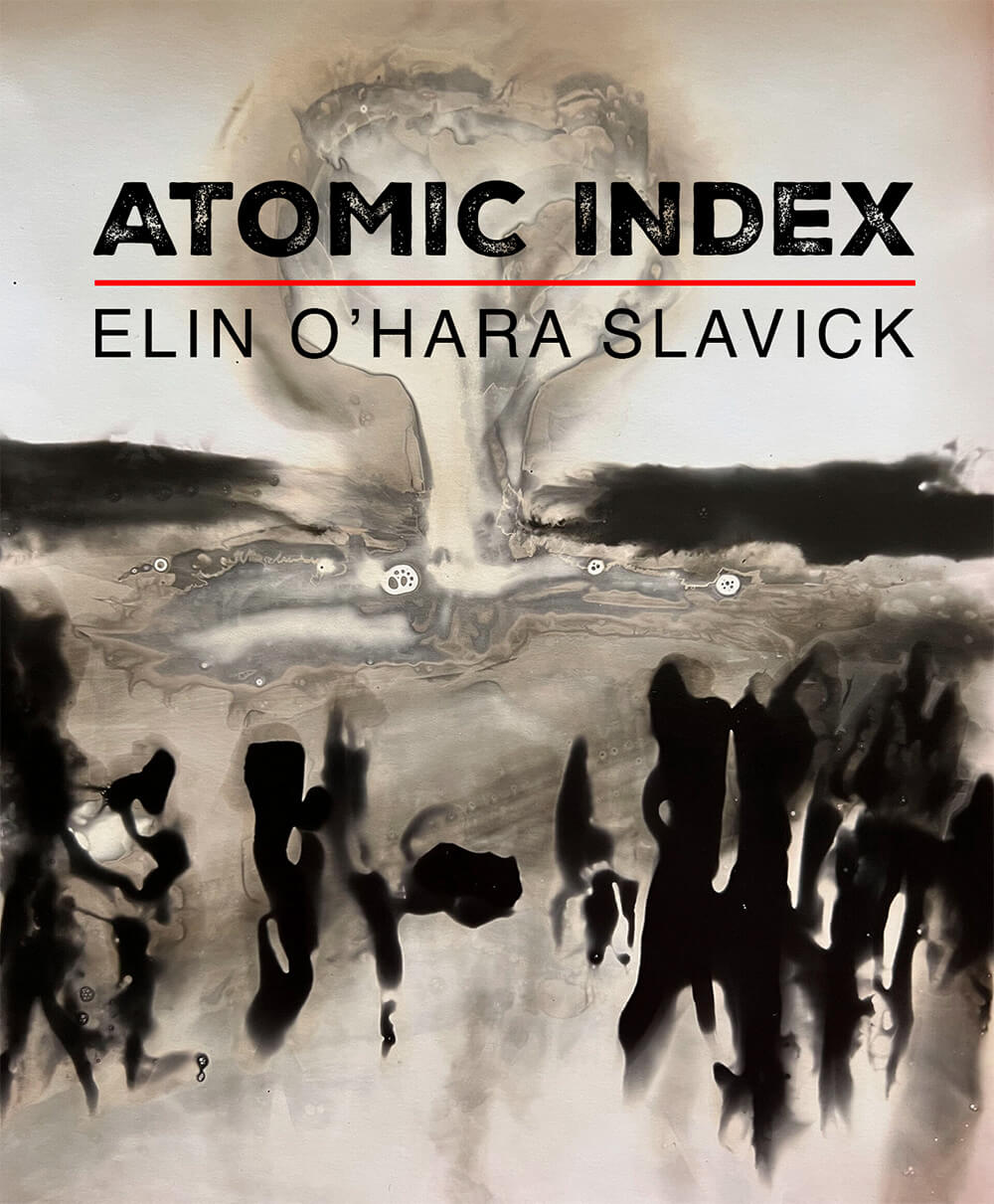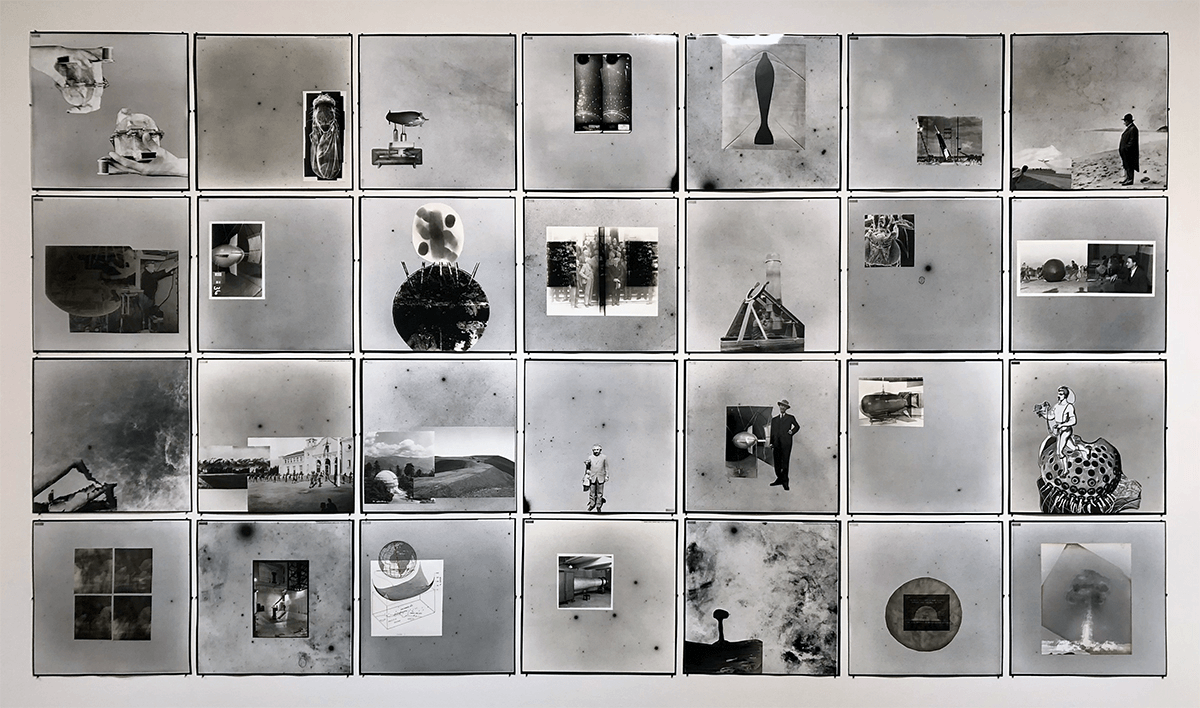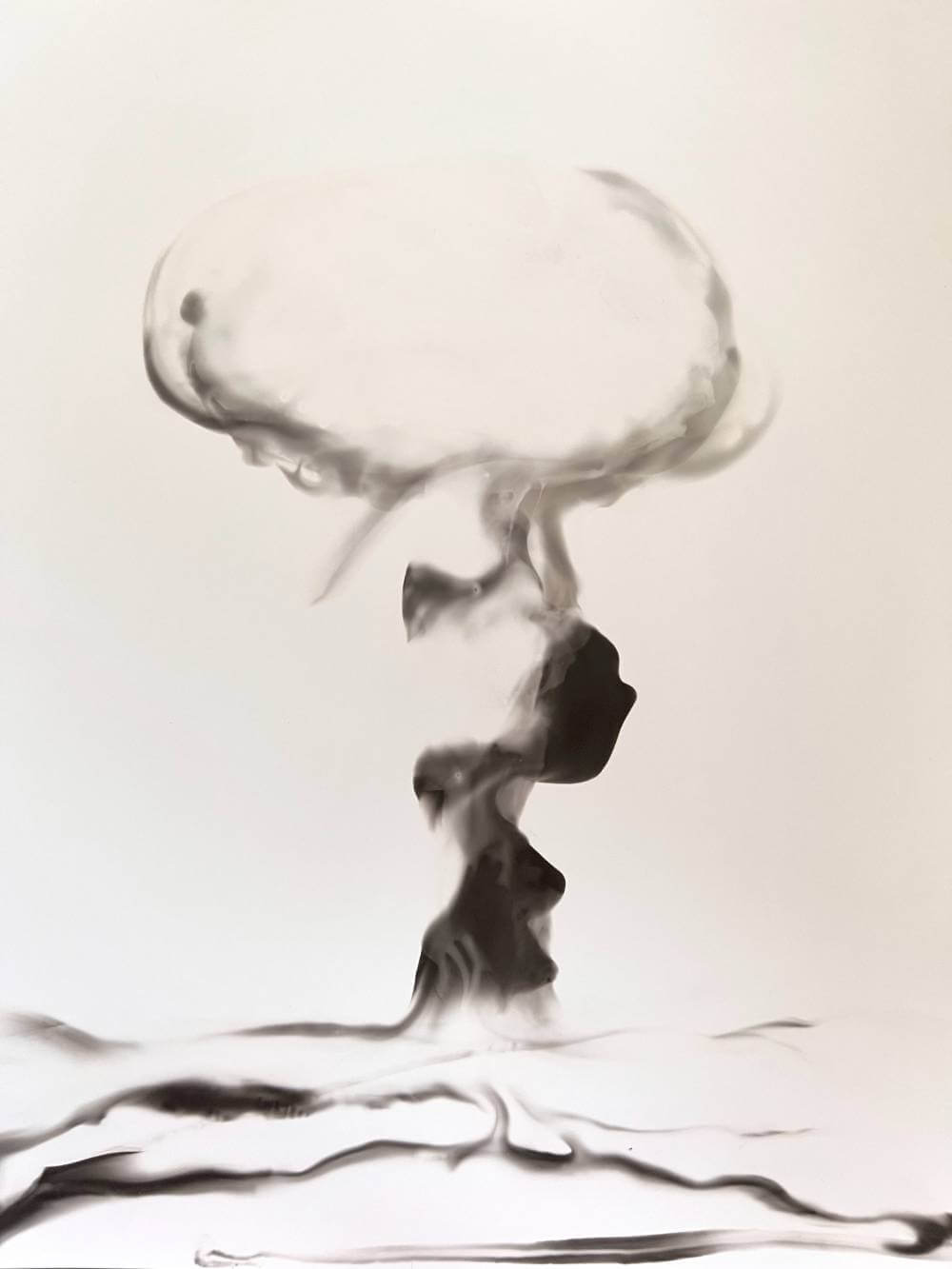Atomic Index | elin o'Hara slavick

in the Main & Window Galleries
ATOMIC INDEX | ELIN O'HARA SLAVICK
October 30 - December 8, 2023
Artist Talk & Panel: Monday, October 30, 2023 @ 6PM
Opening Reception: Monday, October 30, 2023 @ 7-9PM
The Cerritos College Art Gallery is thrilled to present ATOMIC INDEX, a solo exhibition
featuring a range of distinct, but interconnected, bodies of work by Southern California-based
artist elin o’Hara slavick.
In the Main Gallery, the artist presents an overwhelmingly immersive installation
of 528 photo-chemical drawings, each resembling atomic mushroom clouds, one for every
known atmospheric, above-ground nuclear test conducted globally to date. These powerful
and provocative images were produced using a decidedly innovative process of drawing
with a combination of developer and fixer on fogged and expired silver gelatin photo-paper.
During slavick’s 2022 artist residency at Caltech, she tasked herself with renovating
the long-defunct Sky Atlas darkroom, initially with the plan of producing silver gelatin
prints from the college’s archival negatives and transparencies. To her delight, she
found boxes upon boxes of unused photographic paper in the darkroom, including many
that were fogged from expiration or accidental exposure. Experimenting with these
found materials by using chemicals normally reserved for developing and fixing photographs
as a primary medium unto itself, slavick created semi-representational abstractions
of nuclear tests (or trees, brains, Rorschach tests, fetuses, skulls...)
Standard camera-based photography carries with it an inherently indexical association,
due to the process of exposure in which some ‘thing’ is recorded by the trip of the
camera’s shutter and the emulsion of the film capturing light as it reflects off an
external subject. The gestural mark-making of an artist’s hand produces a completely
different kind of indexical image, an expression as much as a trace. Transforming
found materials into experimental drawings of nuclear explosions was a natural extension
of the simultaneous research slavick was conducting in the Caltech archives, which
revealed that the detonators for Little Boy and Fat Man (the two atomic bombs dropped
by the US over Hiroshima and Nagasaki) were, in part, designed at Caltech and many
influential Caltech scientists, including Oppenheimer himself, worked on the Manhattan
Project. According to the artist, these drawings were largely a result of her feelings
of impatience, frustration, and a sense of “helplessness in the face of impending
possible annihilation and the knowledge that we are all living in a contaminated world.”
At the same time that she was producing her chemical drawings in the darkroom, she
also discovered numerous glass plate negatives of the sky made at the Palomar Observatory,
as well as many stunning contact prints of those glass plates, printed in the Sky
Atlas darkroom – the exact one in which she was then working. On top of these, she
layered archival prints of found photographs ranging from a grinning Albert Einstein
holding his own marionette doppelgänger to a macroshot of an irradiated insect’s mutated
wings. The resulting series of collages (28 of 200 included in the exhibition) are
appropriately titled The Blur of Science (Sky Atlas). Also displayed in the exhibition
are vitrines of historical printed matter related to nuclear testing and bombing (including
books and other objects from Hiroshima, Nagasaki, and Fukushima - such as leaves and
bark from A-bombed trees in Hiroshima, chestnuts from the exclusion zone in Fukushima,
paper peace cranes from Nagasaki, a red shoe found on the beach in Fukushima, and
two 3D-printed replicas of an A-bombed bottle from the Hiroshima Peace Memorial Museum
Archive that was printed at Caltech as prototypes for a proposed life-size titanium
version to be installed on the Caltech campus).
Outside, in the Window Gallery, the artist presents two photogram cyanotypes of A-bombed
artifacts from the Hiroshima Peace Memorial Museum archive, as well as a selection
of drawings from an earlier project, Bomb After Bomb: A Violent Cartography, mapping
various locations the US has bombed using nuclear weapons, including Hiroshima and
Nagasaki, but also Alamogordo in New Mexico, Proving Ground in Nevada, and the Bikini
Atoll.
ABOUT THE ARTIST
elin o’Hara slavick is an artist, curator, critic, and activist. Her work has been widely exhibited internationally. She is the author of Bomb After Bomb: A Violent Cartography (with a foreword by Howard Zinn), After Hiroshima (with an essay by James Elkins), Cameramouth (a chapbook of surrealist poetry), and Holding History in Our Hand (commemorating the 75th anniversary of the Hiroshima and Nagasaki bombings). She received her BA from Sarah Lawrence College and her MFA in Photography from the School of the Art Institute of Chicago. Prior to moving to Southern California, she held the position of Professor of Art at the University of North Carolina at Chapel Hill for over 25 years. She is currently an Artist-in-Residence at the UC Irvine College of Health Sciences, having previously served as a visiting Artist-Fellow at Caltech during Spring of 2022.
 elin o'Hara slavick, Blur of Science (selection, Cerritos Installation), 2022
elin o'Hara slavick, Blur of Science (selection, Cerritos Installation), 2022

elin o'Hara slavick, Chemical Drawing #10, 2022


Stay Connected